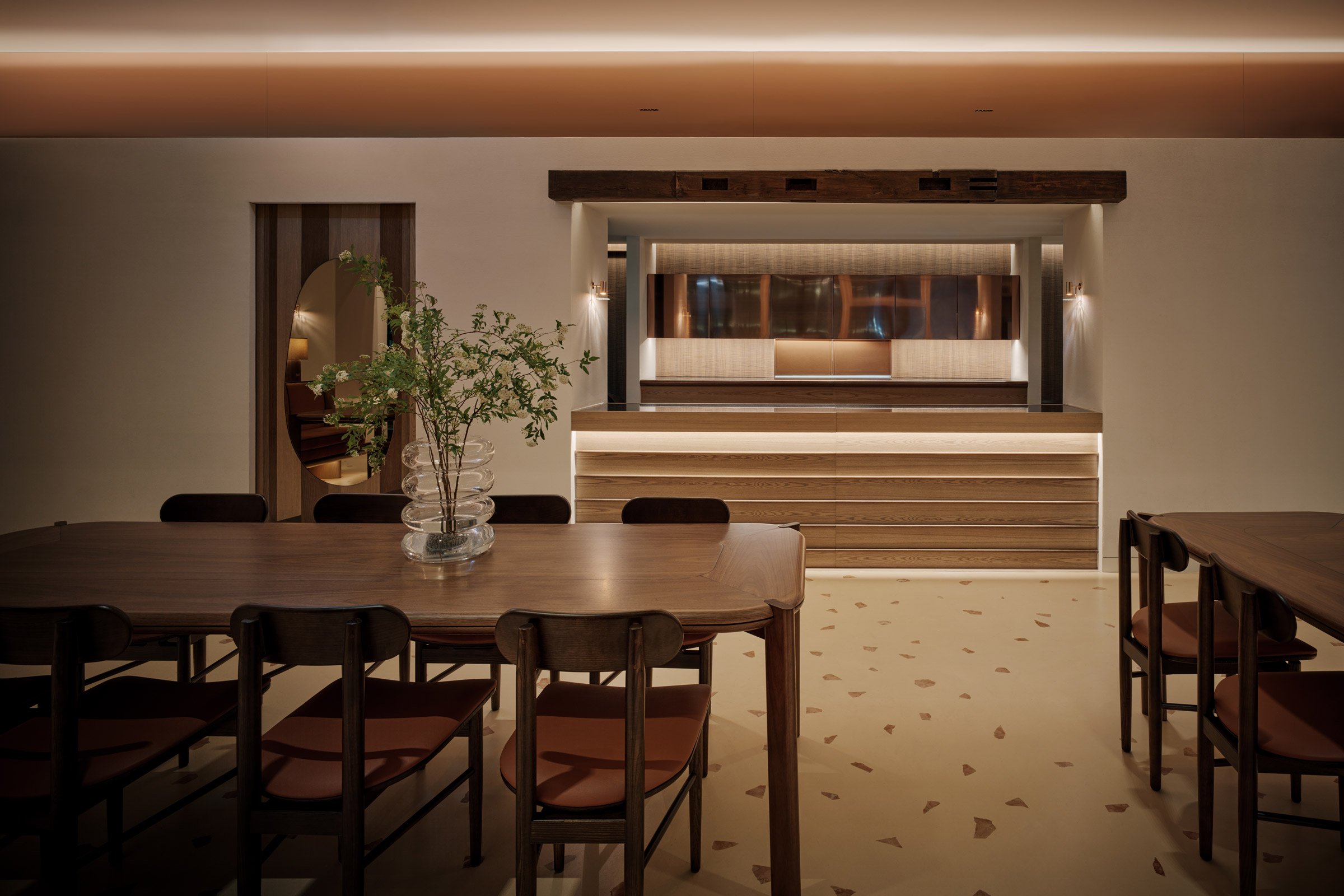Manlijhwa Fuses Korean Tradition with Modernity

In Seoul’s downtown Jongno-gu, Teo Yang Studio has realised an elegant, contemporary restaurant that pays tribute to Korean architectural vernacular
Manlijihwa aims to put a contemporary spin on traditional Korean grilled eel cuisine, a mission that’s reflected in the design. The entrance’s front counter reinterprets the trademark movable saryunjeong pavilion of the Goryeo Dynasty, with the space then transitioning into a narrow aisle with a window that frames a garden view, ‘borrowing scenery’ in a manner reminiscent of traditional hanok homes. At the back wall is a cube that interprets the jeongja pavilion form: this is central to the overall space, being traditionally built in places with beautiful scenery. Here, it functions as the background of the small dining hall, an open space overlooking the city. Guests then move from this narrow space to the wider main dining room and the innermost private dining room. This latter space, inspired by traditional tea rooms and guest rooms (sarangbang), offers a sense of openness in the vein of a hanok hall through its sloping roof and column structure.
Yang and his team have more materially echoed tradition by reusing hanok material for some of the wooden elements, such as the structure on the private dining room ceiling and the pillars found in the main dining space. Earthenware placed on the decorative cabinets on the bronze mirror walls is inspired by the ancient Three Kingdoms Period, adding a sense of depth and time to the space. The studio also created custom collage artworks using natural materials such as earth, Korean lacquer, bronze and dried straw, putting a final touch on the homage to the diversity of Korean dining, design and craft.




















